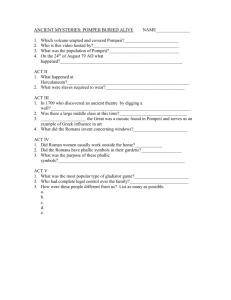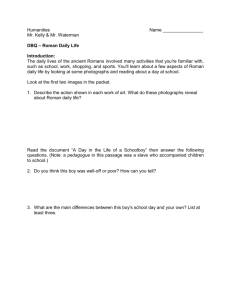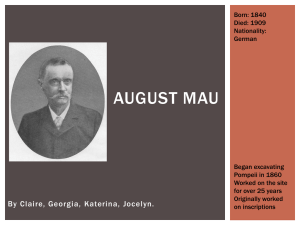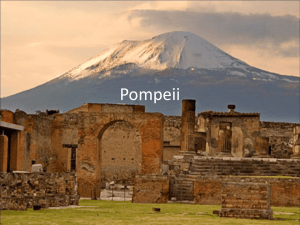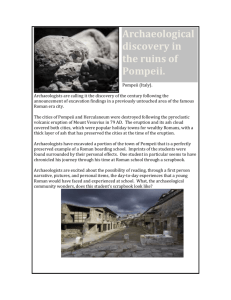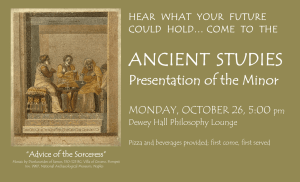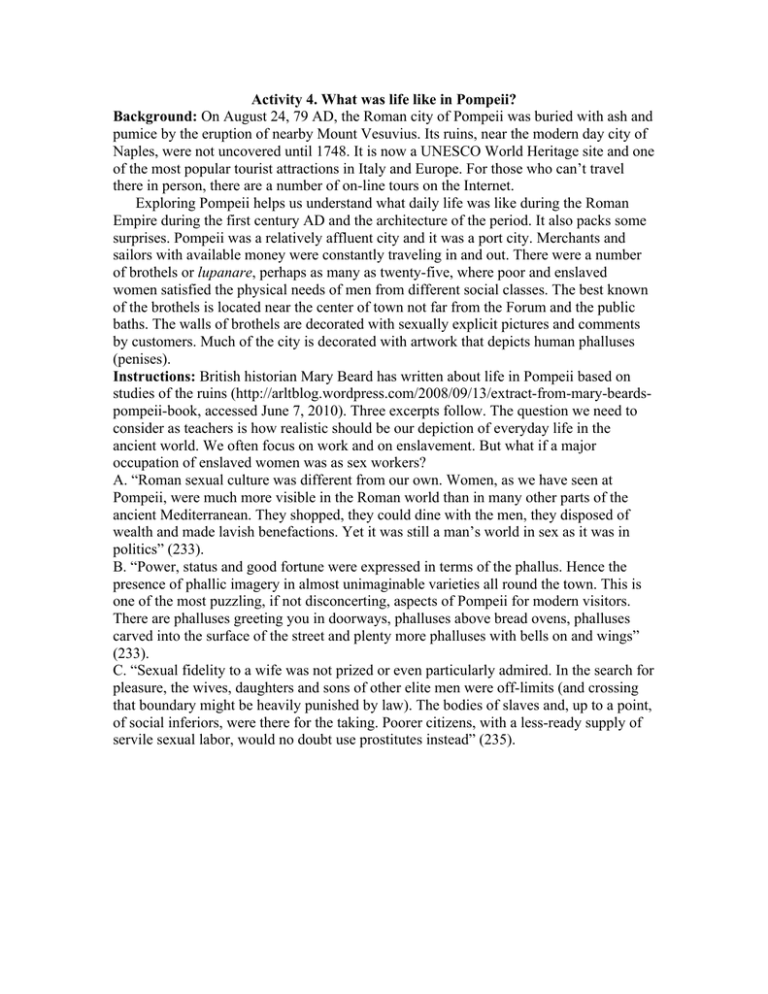
Activity 4. What was life like in Pompeii?
Background: On August 24, 79 AD, the Roman city of Pompeii was buried with ash and
pumice by the eruption of nearby Mount Vesuvius. Its ruins, near the modern day city of
Naples, were not uncovered until 1748. It is now a UNESCO World Heritage site and one
of the most popular tourist attractions in Italy and Europe. For those who can’t travel
there in person, there are a number of on-line tours on the Internet.
Exploring Pompeii helps us understand what daily life was like during the Roman
Empire during the first century AD and the architecture of the period. It also packs some
surprises. Pompeii was a relatively affluent city and it was a port city. Merchants and
sailors with available money were constantly traveling in and out. There were a number
of brothels or lupanare, perhaps as many as twenty-five, where poor and enslaved
women satisfied the physical needs of men from different social classes. The best known
of the brothels is located near the center of town not far from the Forum and the public
baths. The walls of brothels are decorated with sexually explicit pictures and comments
by customers. Much of the city is decorated with artwork that depicts human phalluses
(penises).
Instructions: British historian Mary Beard has written about life in Pompeii based on
studies of the ruins (http://arltblog.wordpress.com/2008/09/13/extract-from-mary-beardspompeii-book, accessed June 7, 2010). Three excerpts follow. The question we need to
consider as teachers is how realistic should be our depiction of everyday life in the
ancient world. We often focus on work and on enslavement. But what if a major
occupation of enslaved women was as sex workers?
A. “Roman sexual culture was different from our own. Women, as we have seen at
Pompeii, were much more visible in the Roman world than in many other parts of the
ancient Mediterranean. They shopped, they could dine with the men, they disposed of
wealth and made lavish benefactions. Yet it was still a man’s world in sex as it was in
politics” (233).
B. “Power, status and good fortune were expressed in terms of the phallus. Hence the
presence of phallic imagery in almost unimaginable varieties all round the town. This is
one of the most puzzling, if not disconcerting, aspects of Pompeii for modern visitors.
There are phalluses greeting you in doorways, phalluses above bread ovens, phalluses
carved into the surface of the street and plenty more phalluses with bells on and wings”
(233).
C. “Sexual fidelity to a wife was not prized or even particularly admired. In the search for
pleasure, the wives, daughters and sons of other elite men were off-limits (and crossing
that boundary might be heavily punished by law). The bodies of slaves and, up to a point,
of social inferiors, were there for the taking. Poorer citizens, with a less-ready supply of
servile sexual labor, would no doubt use prostitutes instead” (235).

